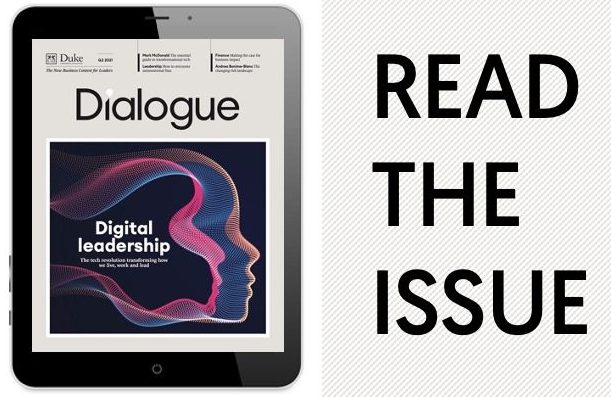The pandemic has been marked by “the rise of e-everything”. Consumers are “e-browsing, e-buying, e-paying, e-media-consuming” in unprecedented numbers. Such, at least, is the view of Alan Jope, chief executive of the Anglo-Dutch FMCG giant Unilever. “We expect that will continue,” he added: “We can rely on people’s use of technology to stick around.”
That seems certain. The Covid-19 virus has proved to be a potent biological accelerant for tech-driven change. The effects have been myriad. Obvious examples include the tightening of online retail’s chokehold on bricks-and-mortar traders, and the work-from-home boom, which sent apps like Zoom and Microsoft Teams to the top of 2020’s download charts around the world. Jope is one of the many who predicts that his company will not return to pre-pandemic norms of five-days-a-week office working. The technology has shown it’s up to the task; so too, observed Jope, has his company, in its ability to adapt to new ways of doing things.
Jope’s remarks allude to one of the key points of today’s wave of digitally-driven change: it is never just about the technology. So much more is in play: customer experiences, product and service offerings, business models, strategy, organizations’ whole way of working, employee behaviour. That puts leaders centre-stage, as Ryan McManus explores in our cover feature. We have entered the era of digital leadership. This is, as he puts it, the “new core”. A grasp of digital technology, its potential and its impact on organizations is essential for success – and as explorers, catalysts, connectors and builders, leaders have vital roles to play.
Yet, as McManus notes, leaders with extensive digital experience are in short supply. If you could do with brushing up on the basics of edge vs quantum computing, or on the application of APIs, ML and RPA, then our brief guide from Gartner’s Mark McDonald is not to be missed. Leaders are not technologists, but they increasingly need to know the basics, see the potential uses, and understand the critical success factors for implementation. Apart from anything else, while technology creates incredible opportunities, the extent of the change that it enables also creates sizable new risks, which is the theme picked up by Andrea Bonime-Blanc. She argues it’s high time that organizations add technology to their thinking on environmental, social and governance risks – and ensure that leaders throughout the organization understand their part in managing those risks.
Digital’s impact is to be found elsewhere in this issue, too. Anna Gong shares her assessment of the boom in lifestyle brands’ super apps in Asia, and explains why so many traditional businesses need to move on from their traditional CRM approaches. Byron Hanson, meanwhile, reflects on the lessons to be drawn from a year-long experiment in virtual learning. Many L&D specialists are itching to get back in the classroom, but as he shows, we would be wise to blend the best of online approaches with more traditional development.
Elsewhere, we have two fascinating interviews. Andile Nomlala speaks to us about the enduring problem of economic exclusion in South Africa, the need for structural reform, and the role of inspiring leaders in shaping change. And we talk with Trish Devine about the science behind unintentional bias – and the techniques proven to help us overcome our prejudices.
Your guide to it begins here.

